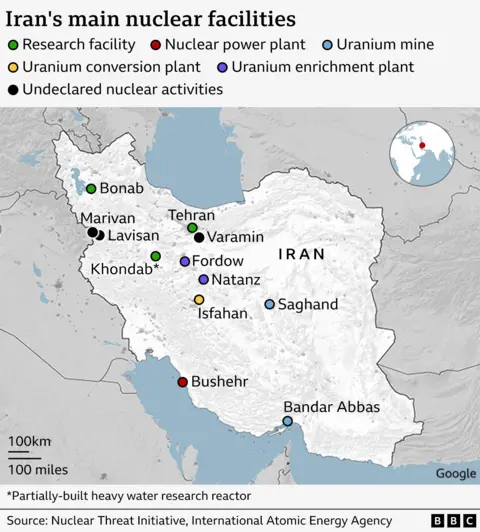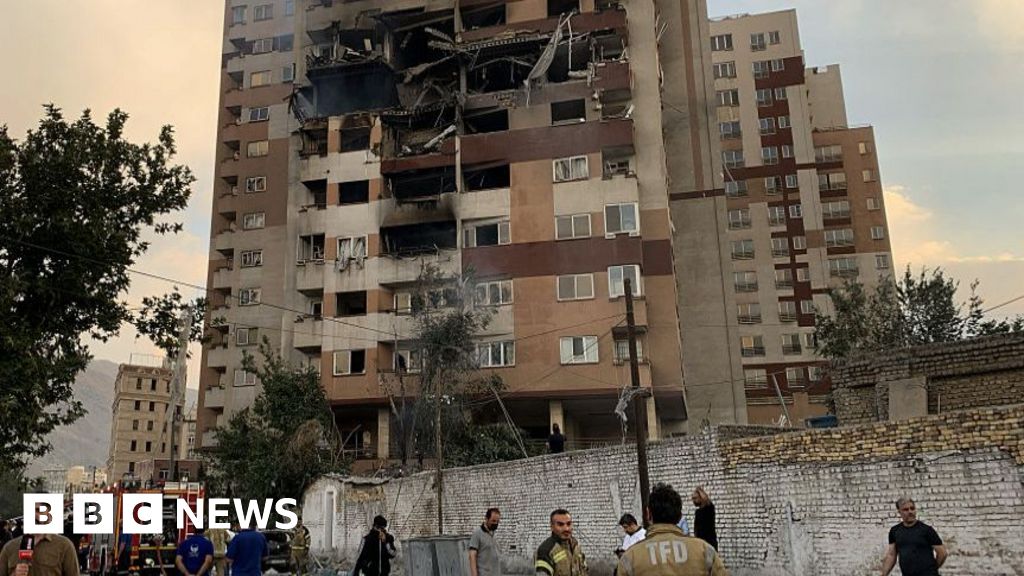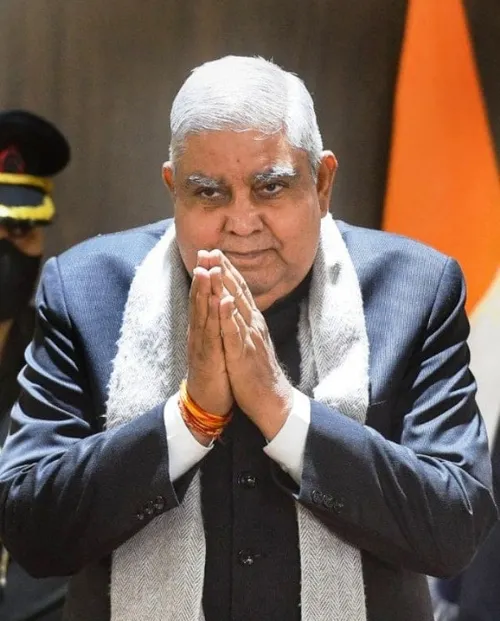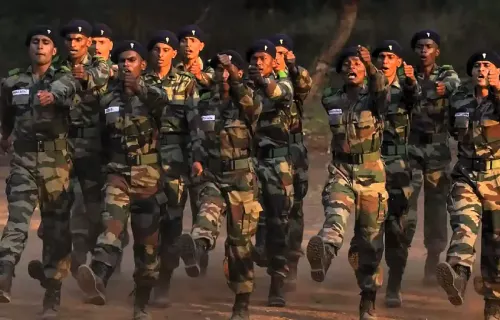BBC News
Israel launched strikes across Iran on Friday, saying they targeted the “heart” of Iran’s nuclear programme.
The strikes killed Hossein Salami, chief of Iran’s Islamic Revolutionary Guards – a powerful branch of the country’s armed forces – other senior military figures and nuclear scientists.
Civilians, including children, were also among those killed, Iranian state media reported. The BBC is not able to independently verify these reports.
The Israeli military said Iran launched about 100 drones towards Israel on Friday morning, which the Israel Defense Forces (IDF) said it was intercepting. A state of emergency was declared in Israel.
The US said it was not involved in the strikes. Multiple strikes were reported, including on Iran’s main nuclear enrichment facility.
When and where did the strikes happen?
Explosions were reported in Iran’s capital Tehran at about 03:30 local time (01:00 BST).
Iranian state TV said residential areas in Tehran were hit, with blasts also heard north-east of the capital.
In Israel, residents were woken by air raid sirens around the same time and received emergency phone alerts.
Israel’s military said it had struck “dozens of military targets, including nuclear targets in different areas of Iran”.
Hours after the initial strikes, an explosion was reported at the Natanz nuclear facility, which is located about 225km (140 miles) south of the capital, according to Iranian state media.
The IDF later confirmed it had struck the site and said its attack had resulted in significant damage.
The global nuclear watchdog, the International Atomic Energy Agency (IAEA), said it was informed by Iranian authorities that there has been no increase in radiation levels at the Natanz plant.
IAEA head Rafael Grossi said nuclear facilities “must never be attacked” and such strikes have “serious implications for nuclear safety, security and safeguards, as well as regional and international peace and security”.
In a statement to board members, he called “on all parties to exercise maximum restraint to avoid further escalation”, saying “any military action that jeopardises the safety and security of nuclear facilities risks grave consequences for the people of Iran, the region, and beyond”.

How did we get to this point?
Israeli Prime Minister Benjamin Netanyahu said the strikes – called Operation Rising Lion – were “a targeted military operation to roll back the Iranian threat to Israel’s very survival”.
He said the operation would “continue for as many days as it takes to remove the spread”.
Netanyahu said Iran has taken steps to “weaponise” in recent months and that, “if not stopped, Iran could produce a nuclear weapon in a very short time”.
An Israeli military official told the BBC that Iran had enough nuclear material to create nuclear bombs “within days”.
In his address, Netanyahu also thanked US President Donald Trump for “confronting Iran’s nuclear weapons programme”.
The strikes come as US talks over Iran’s nuclear programme, which began in April, appear to have stalled in recent days. The next round of talks was scheduled for Sunday.
US President Donald Trump had hoped to strike a deal to stop Tehran developing a nuclear weapon. Iran has long insisted that its nuclear activities are peaceful.
Earlier this week, Trump reportedly held a “tense” phone call with Netanyahu, who has long argued for a military rather than diplomatic approach to Iran’s nuclear abilities.
Last year, Iran and Israel launched a number of airstrikes against each other in April and October – though Israel’s strikes last year were not believed to have been as wide-ranging as its current operation.
Iran foreign minister says attack ‘declaration of war’
Iran’s Supreme Leader Ayatollah Ali Khamenei said Israel “should anticipate a severe punishment”, while Foreign Minister Abbas Araghchi described the attack as a “declaration of war”.
Iran launched around 100 drones towards Israel on Friday morning, the IDF said. The military said it was intercepting the drones.
Iran’s foreign ministry said its armed forces would not “hesitate to defend Iran’s sovereignty with full strength and in the manner they deem appropriate”.
In a statement, the ministry called Israel’s operation “acts of aggression” and said “the US government, as the primary patron of this regime, will also bear responsibility”.
Trump calls for Iran deal ‘before it’s too late’
Reacting to the strikes, Trump said he gave Iran “chance after chance” to make a deal, but “they just couldn’t get it done”.
Certain Iranian officials “spoke bravely, but they didn’t know what was about to happen,” Trump wrote in a social media post, adding: “They are all DEAD now.”
“There has already been great death and destruction, but there is still time to make this slaughter, with the next already planned attacks being even more brutal, come to an end.
“Iran must make a deal, before there is nothing left, and save what was once known as the Iranian Empire. No more death, no more destruction, JUST DO IT, BEFORE IT IS TOO LATE.”
Earlier, US Secretary of State Marco Rubio said the US was not involved with the strikes and did not provide any assistance.
He said the top priority for the US was to protect American forces in the region.
In other international reaction, Oman, which has been mediating US-Iran nuclear talks, said it held Israel responsible for “this escalation and its consequences”.
UK Prime Minister Keir Starmer said reports of the strikes are “concerning” and urged for de-escalation, as did France.
Australia’s Foreign Minister Penny Wong said the strikes risked “further destabilising a region that is already volatile”.
The strikes were also condemned by Japan, Turkey, Indonesia and Saudi Arabia.
China said it was “deeply worried about the severe consequences” that the strikes may bring.
UN Secretary-General António Guterres asked both sides for “maximum restraint” to avoid “at all costs a descent into deeper conflict”, his spokesperson said.
Who has been killed?
The IDF said that three Iranian military commanders had been “eliminated in the Israeli strikes across Iran”.
They were Hossein Salami, the commander-in-chief of the Islamic Revolutionary Guards (IRGC), Gholamali Rashid, the commander of Khatam-al Anbiya Central Headquarters, and the chief of staff of Iran’s armed forces, Mohammad Bagheri.
IRGC later said Amir Ali Hajizadeh, the commander of its air force, was also killed alongside a group of other IRGC forces.
The Israeli military said its overnight attack focused on “over 100 targets, including senior figures of the Iranian General Staff and leaders of the nuclear program”.
IRGC-affiliated news agency Tasnim reported six nuclear scientists were also killed in the strikes, of whom five have been named:
- Fereydoon Abbasi, former head Iran’s Atomic Energy Organization
- Mohammad Mahdi Tehranchi, who was involved in Iran’s nuclear weapons programme
- Abdulhamid Minouchehr, head of nuclear engineering at Iran’s Shahid Beheshti University
- Ahmad Reza Zolfaghari, a nuclear engineering professor at Shahid Beheshti University
- Amirhossein Feqhi, another nuclear professor at Shahid Beheshti University
Ali Shamkhani, senior adviser to Iranian Supreme Leader Ayatollah Ali Khamenei, was also reported to have been seriously injured, according to Iranian reports.
State media reported civilians, including children, were also among those killed.
The BBC is not able to independently verify these reports.
What is Iran’s nuclear programme?

Iran has long maintained that its nuclear programme is for civilian purposes only. It has several facilities around Iran, at least some of which have been targeted in the Israeli strikes.
But many countries – as well as the global nuclear watchdog, IAEA – are not convinced Iran’s programme is for civilian purposes alone.
This week, the watchdog’s board of governors formally declared Iran in breach of its non-proliferation obligations for the first time in 20 years.
It cited Iran’s “many failures” to provide full answers about undeclared nuclear material and Iran’s stockpile of enriched uranium.
An earlier IAEA report said Iran had enriched uranium to 60% purity, enough near weapons grade uranium to make nine nuclear bombs.
Anurag Dhole is a seasoned journalist and content writer with a passion for delivering timely, accurate, and engaging stories. With over 8 years of experience in digital media, she covers a wide range of topics—from breaking news and politics to business insights and cultural trends. Jane's writing style blends clarity with depth, aiming to inform and inspire readers in a fast-paced media landscape. When she’s not chasing stories, she’s likely reading investigative features or exploring local cafés for her next writing spot.







